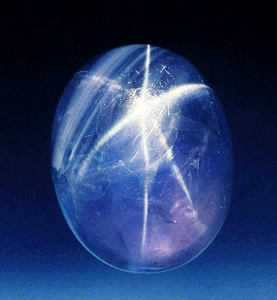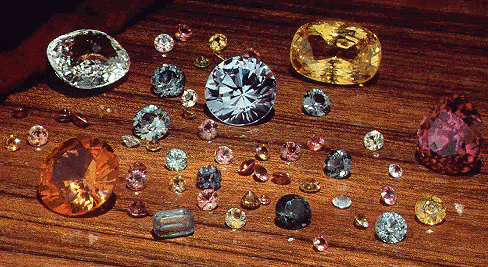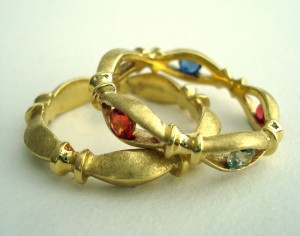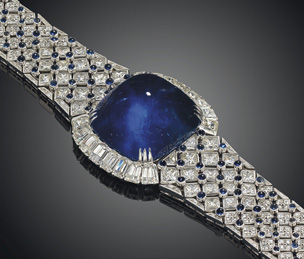
Rubies and sapphires are actually the same mineral, corundum. Both have long enjoyed favor in high places, appearing in royal jewels since ancient times.
Hindus offered sapphires to the god Krishna so they could be reborn as emperors.
Europeans associated sapphires’ heavenly blue with eternity and believed it would prevent poverty, make a stupid man wise and an irritable one good-natured.
The star sapphire, said to be a spark from the Star of Bethlehem, was particularly coveted, its three crossed rays representing faith, hope and destiny. This one, weighing 182 carats, has to be one of finest in the world and must be seen to be believed – which you can do at the Smithsonian’s Natural History Museum.
Here’s another example of that most-coveted shade of sapphire, deep royal blue, this 180.86-carat Ceylon sapphire is surrounded by diamonds – and up for grabs next month if you happen to have a quarter mill to spare. Designed by Mouwad, it’s expected to fetch $250-350,000 at Christi’e Dubai in October.[UPDATE 10/20/10: Make that a mill. The bracelet sold for $932,500.]
A matching pendant/brooch (part of a parure but sold separately) is expected to go fo $180-250,000. [UPDATE 10/27/10: sold for $296,500]
 That deep blue is what we associate with the finest, precious sapphire but the gem actually comes in every color of the rainbow – as you can see from this sampling from that world-class collection at the Smithsonian.
That deep blue is what we associate with the finest, precious sapphire but the gem actually comes in every color of the rainbow – as you can see from this sampling from that world-class collection at the Smithsonian.

Kashmir and Burma once produced the finest blue sapphires, but the majority these days come from Australia and, most recently, Madagascar.
Slightly paler but still valuable are those from Sri Lanka, the earliest source—along with India—of this historic gem. Small sapphires are being mined in Montana as well.
Etruscans were the first to use sapphires, in the seventh century B.C., and by the Roman era, they were known as the “king” of all gemstones. Easy to see why.

